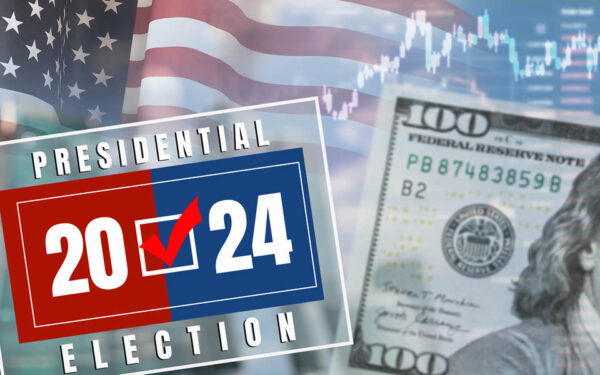Amazon Wins $1.5 Billion Tax Case with IRS
Background
Transfer pricing is a simple concept, yet can result in many complex tax implications. One of the most significant areas of dispute concerns the tax associated with the valuation of intangibles transferred by U.S. corporations to foreign entities and the value of the transferred intangibles. The process by which multinational companies determine the value in the transfer of intangible property is an imperfect science, with critics seeing it as an unfair tax avoidance strategy. A number of transfer pricing cases regarding the transfer of intangible property have been reported in the news in recent years. Some are awaiting trial while others have settled. On March 23, 2017, one such case came to a close.
Amazon.com Inc. (“Amazon”) won a $1.5 billion U.S. Tax Court case (Amazon.com Inc. v. Commissioner) defending itself against a transfer pricing adjustment by the Internal Revenue Service (“IRS”). The transfer pricing adjustment was related to a cost sharing arrangement (“CSA”) involving intangible property used by Amazon Europe Holding Technologies SCS (“Amazon Europe”), an Amazon subsidiary located in Luxembourg.
The outcome of this case continues a trend demonstrating the ineffectiveness of the IRS in litigating large transfer pricing cases. The U.S. Tax Court rejected a variety of IRS arguments and found that on several occasions the agency “abused its discretion, or acted arbitrarily or capriciously.”
Amazon.com Inc. v. Commissioner
Beginning in 1998, Amazon launched three branded retail websites focused on European customers: Amazon.co.uk and Amazon.de in October 1998; and Amazon.fr in August 2000. In an attempt to manage those sites from its headquarters in Seattle, Amazon entered into various intercompany service arrangements. Between June 2004 and April 2006, Amazon reorganized its European operations and moved the ownership and management of the websites to Luxembourg. Effective January 1, 2005, Amazon and Amazon Europe entered into a cost-sharing arrangement under which they agreed to group resources to develop new intangible property and to enhance the value of existing intangibles. Amazon transferred three groups of intangible assets to Amazon Europe:
- Software and technology used to run the company’s European websites, fulfillment centers and related businesses;
- Marketing intangibles such as trademarks and domain names for the European business; and
- Customer lists and other information relating to Amazon’s European customers.
Amazon and Amazon Europe agreed to share all costs associated with the development of new intangible property and enhancement of existing intangibles, in proportion to their respective, reasonably anticipated benefits. Amazon tracked said costs in six broad categories:
- Cost of Sales.
- Fulfillment.
- Marketing.
- Technology and Content.
- General and Administrative.
- Other.
According to Amazon’s 2005 Annual Report, the Technology and Content expenses “consist principally of payroll and related expenses for employees involved in research and development, including application development, editorial content, merchandising selection, systems and telecommunications support, and costs associated with the systems and telecommunications infrastructure.” Amazon Europe also made an upfront buy-in payment to Amazon in consideration for the license and assignment of rights to Amazon’s pre-existing technology and marketing intangible property. To determine the buy-in, Amazon chose the comparable uncontrolled transaction method (“CUT”), from which it determined that on January 1, 2005, the preexisting intangibles were worth $234 million.
The IRS began its audit of Amazon’s CSA beginning in 2008. In 2011, the IRS asserted that the buy-in amount for the intangible property was not at arm’s-length and should be increased to $3.6 billion. The taxpayer valued the intangibles as separate assets with a limited useful life, while the IRS arrived at its value based on the theory that a business was being transferred to the foreign subsidiary, treating the intangibles as having a perpetual life and including value for items other than the separately identifiable intangibles.
Result
The Tax Court held that Amazon’s use of the CUT method was the best method to determine the buy-in payment. The IRS applied a discounted cash flow (“DCF”) method to the expected cash flows from the European business to determine that the buy-in payment should have been $3.6 billion. Amazon successfully argued that the IRS inflated the buy-in payment by improperly including in it the value of subsequently developed intangible property, in violation of the Internal Revenue Regulations. “The discounted cash flow methodology that the government tried to use here is very dead,” Terrence R. Chorvat, a law professor at George Mason University, told Bloomberg BNA. “CUT seems to be the preferred method.”
Additionally, the Tax Court found that the IRS abused its discretion in determining that 100% of the Technology and Content costs are associated with intangible development and that Amazon’s cost-allocation method is a reasonable basis for allocating costs to intangible development.
Conclusion
The IRS’s defeat in the Amazon case is the latest in a series of losses, including Veritas, Xilinx, and Altera. The majority of the transfer pricing cases involve the taxpayer shifting income from intangible property developed in the U.S. to low-tax foreign jurisdictions by using cost-sharing arrangements.
The IRS’ loss in a $1.5 billion transfer pricing dispute with Amazon has experts calling for a re-examination of the agency’s valuation methodologies in order to prevent it from wasting its own resources and those of taxpayers.
























